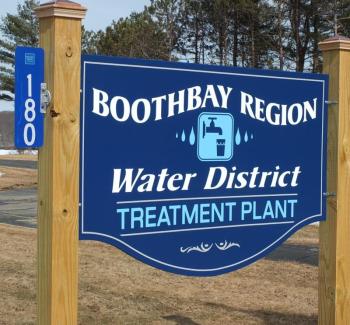Public again shares concerns about Knickerbocker Lake
For the second time in a month, a group of Knickerbocker residents on Aug. 26 raised concerns about the lake’s water levels with Boothbay Region Water District (BRWD) trustees.
As previously reported in the Register, the group’s main issue was the impact of the decreased quantity and the lake’s ability to replenish.
As of Aug. 25, BRWD had withdrawn about 32 million gallons, and is permitted by the Department of Environmental Protection (DEP) to draw up to 19 million more, according to the Knickerbocker Withdrawal Report. However, General Manager Weston Alley said the district will likely switch to Adams Pond around Labor Day, and he estimates they will only be withdrawing five million more gallons from Knickerbocker for the season.
Clerk Kevin Anothony explained a culvert beaver dam that was recently removed by Maine Department of Transportation (MaineDOT) had caused the lake to be artificially high the past few years.
“Natural change in the landscape will have a greater effect on pond levels than withdrawing what we're allowed in our permit,” added Alley.
Chairman Gerry Gamage suggested the group reach out to DEP and MaineDOT to look into having another dam installed.
“I don't think we have any jurisdiction in that regard, because we don't own the pond, but I think we could consider being supportive of it,” said Gamage.
Concerns were also raised about the growth of algae and other shrubbery, and if it was connected to low water levels. Trustees explained, such growth is caused by “nutrient loading” from the runoff caused by people living in the watershed.
Alley also discussed BRWD’s policy around droughts, which are measured in levels from 0 to 4. In times of drought, when Adams Pond is not getting adequate recharge, the district continues to use Knickerbocker; this is because when there is rain, Knickerbocker has a better replacement rate due to its more expansive watershed, and its annual safe yield is also about 200 million more gallons than Adams; this makes sure Adams sustains an adequate water level for the winter months in case of low recharge, so customers will have adequate access to water needed for fire protection, and everyday use.
“If we don't get that recharge ... and we go into a freeze, and Adams Pond gets down to that level ... We have no water source left for the rest of the community,” said Alley.
In other business, Alley said the finished water flow for the past week as of Aug. 26 reached 897,000 gallons a day, compared to last year’s average of 806,000.
The district’s Filter Waste Recycling Project is also moving forward and will likely go out to bid this fall.



























